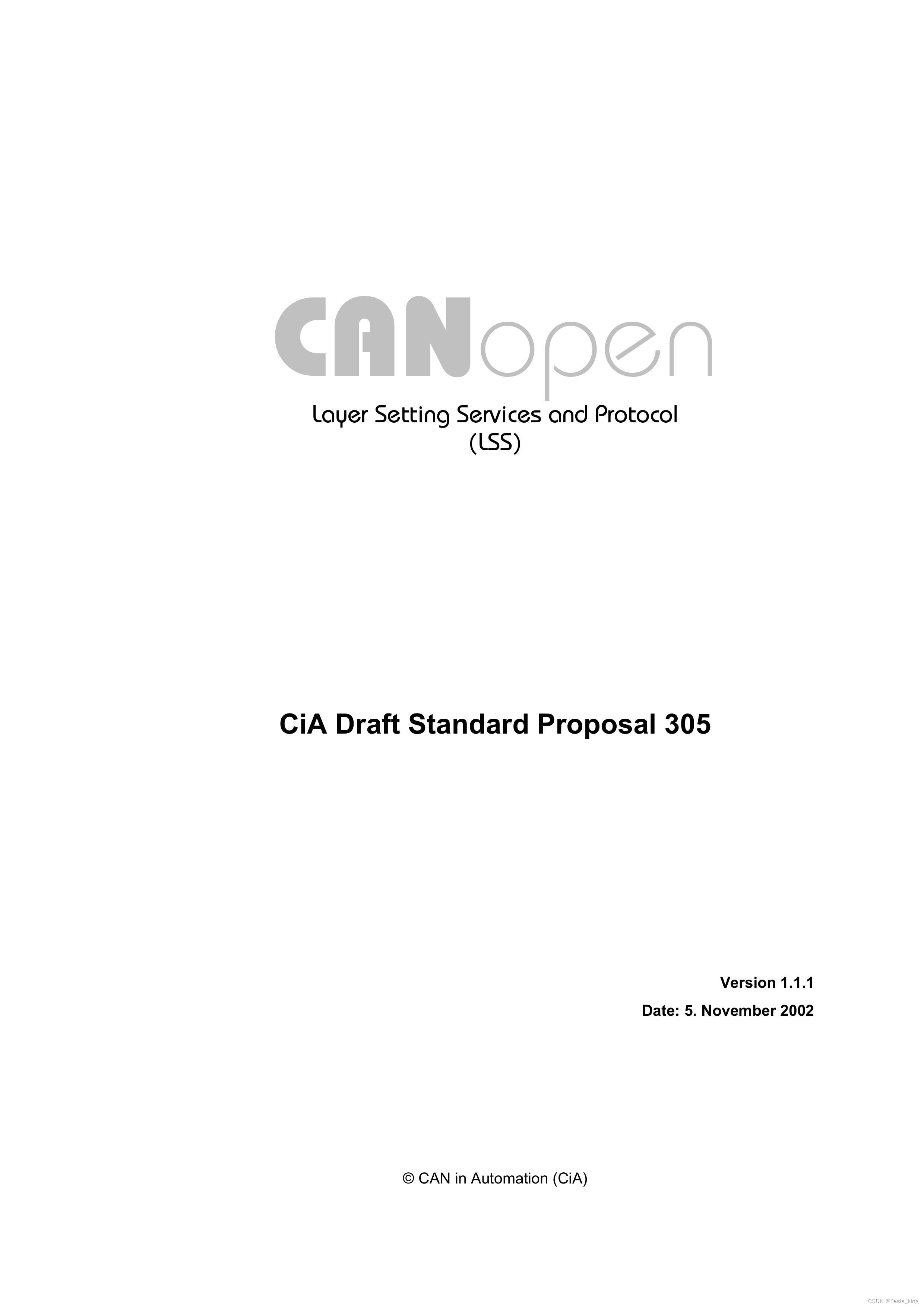
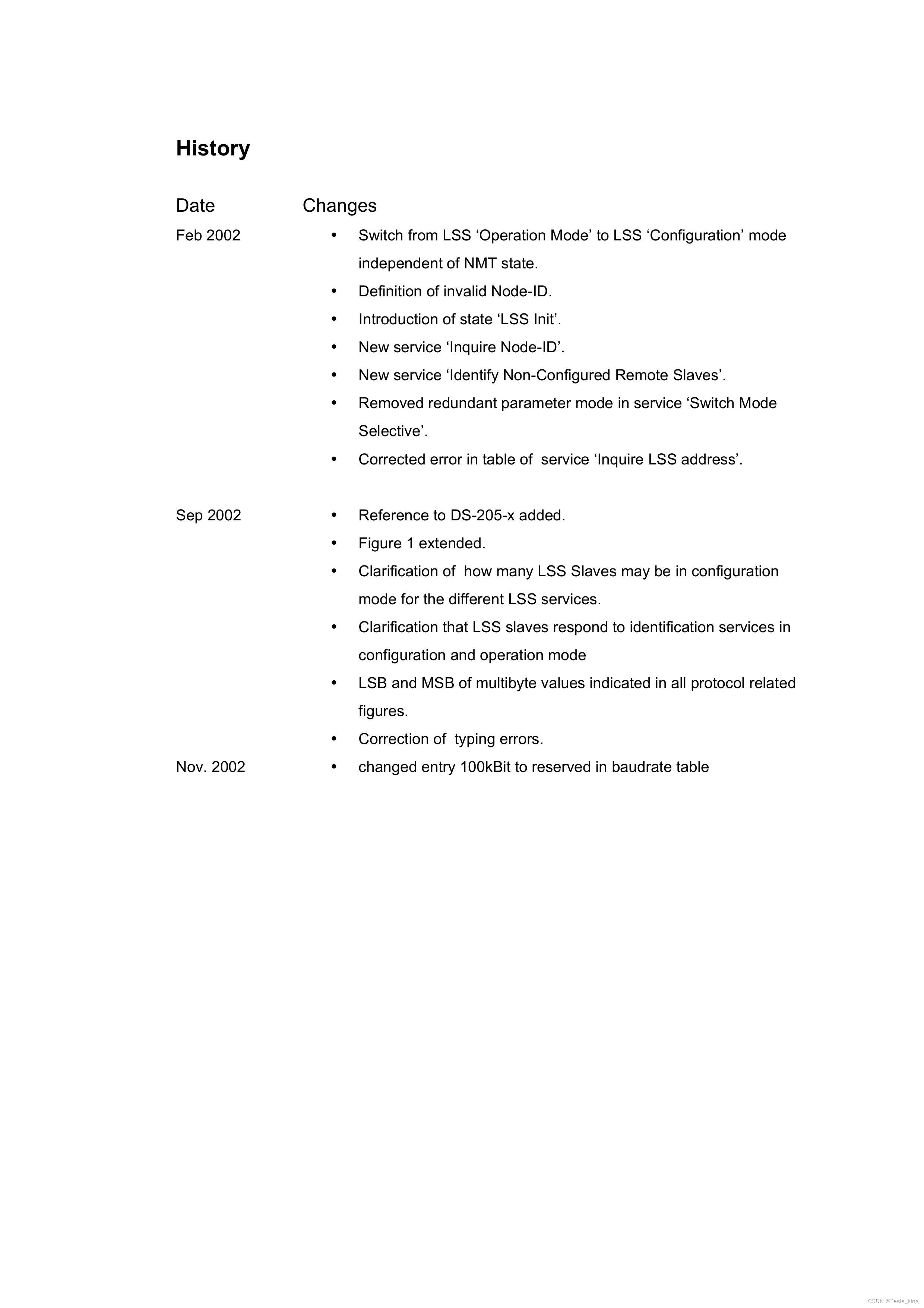
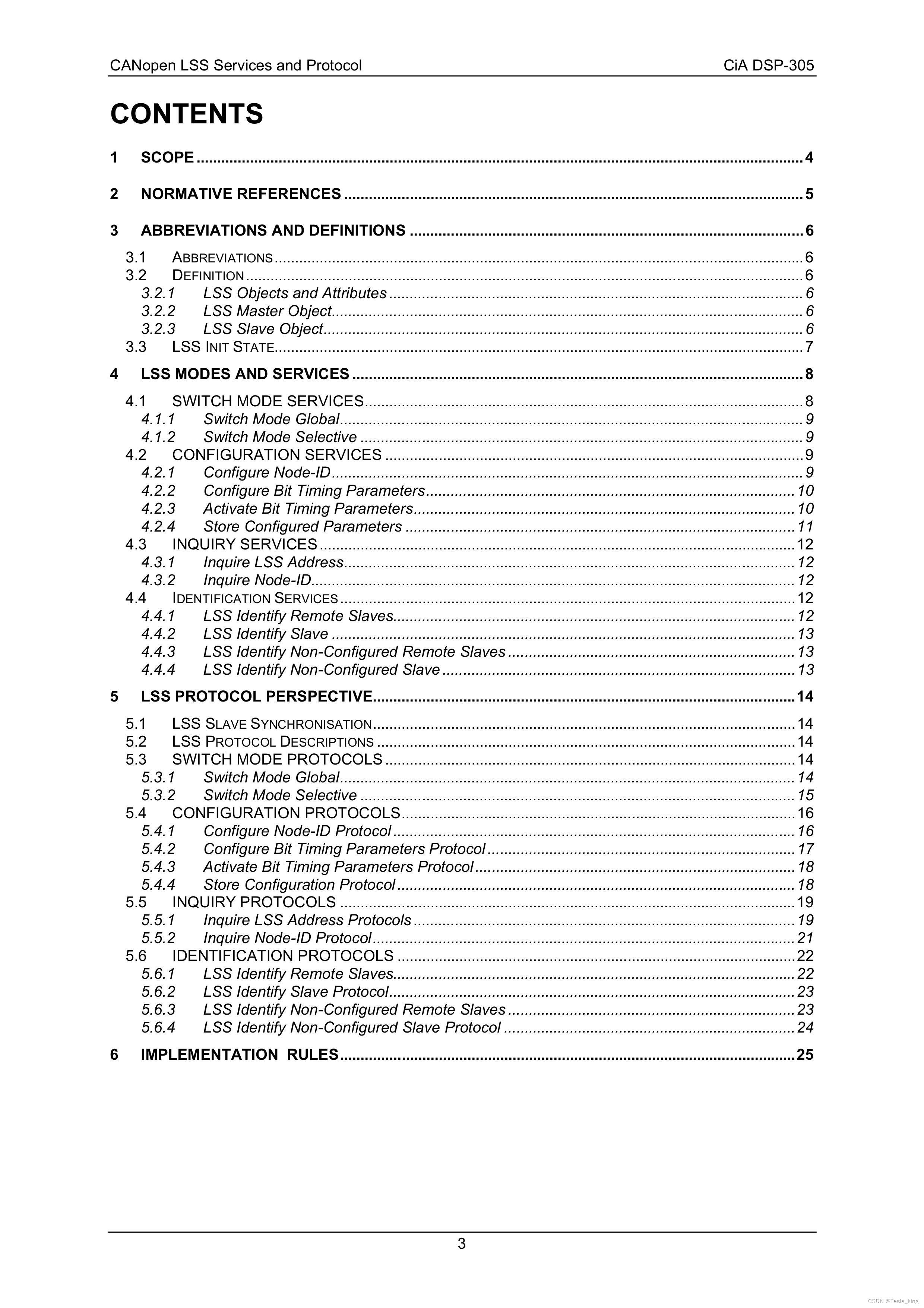


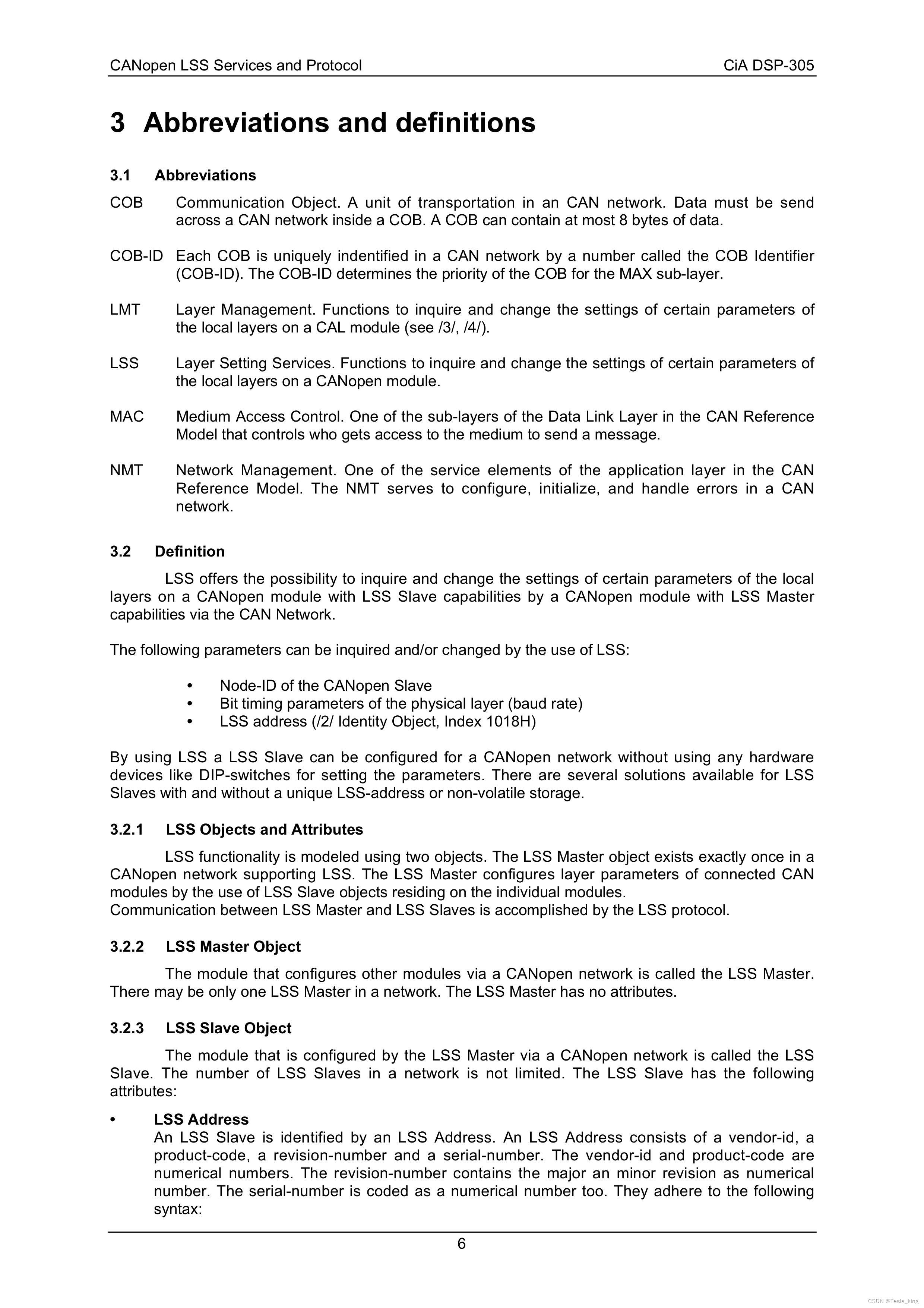
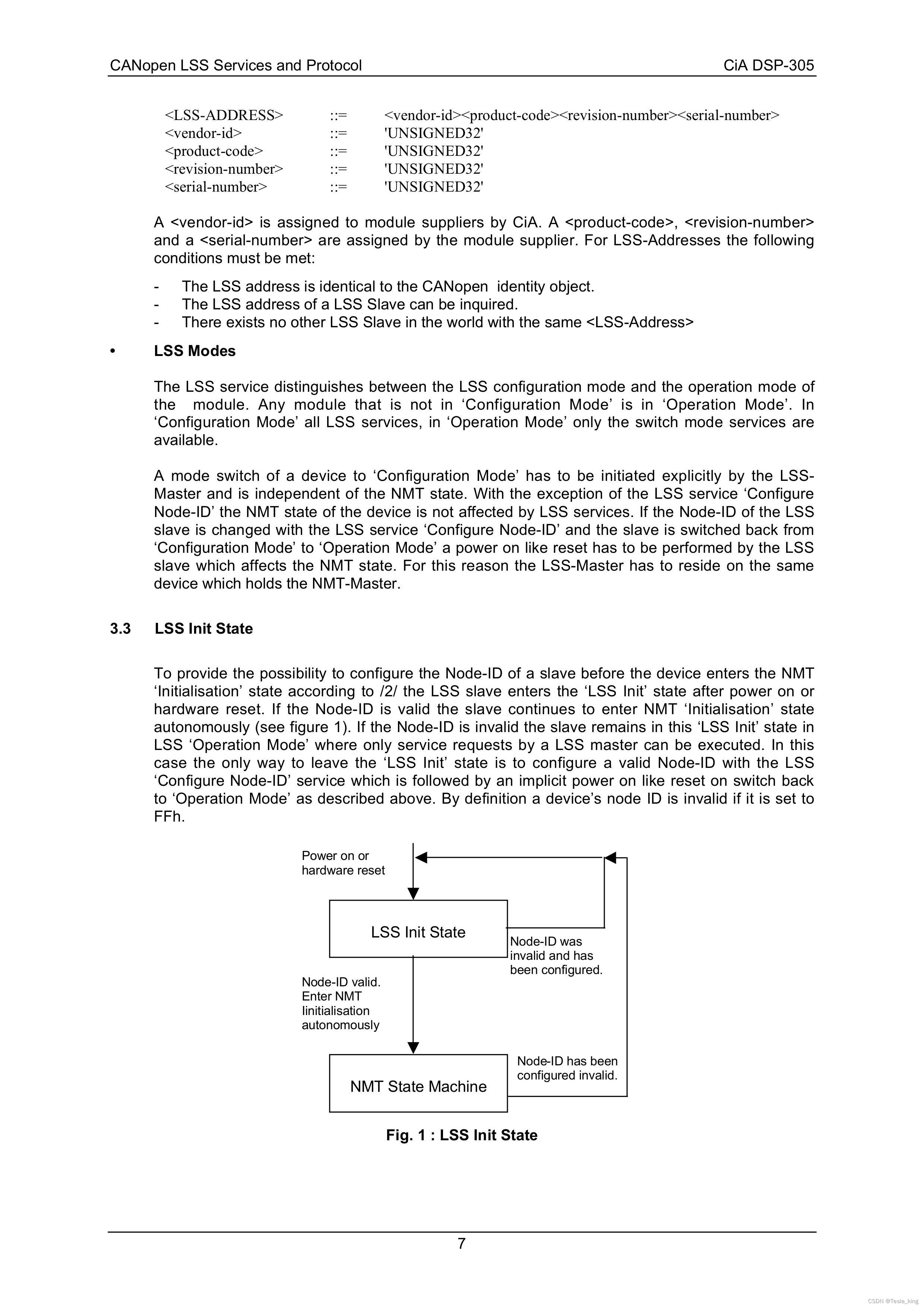
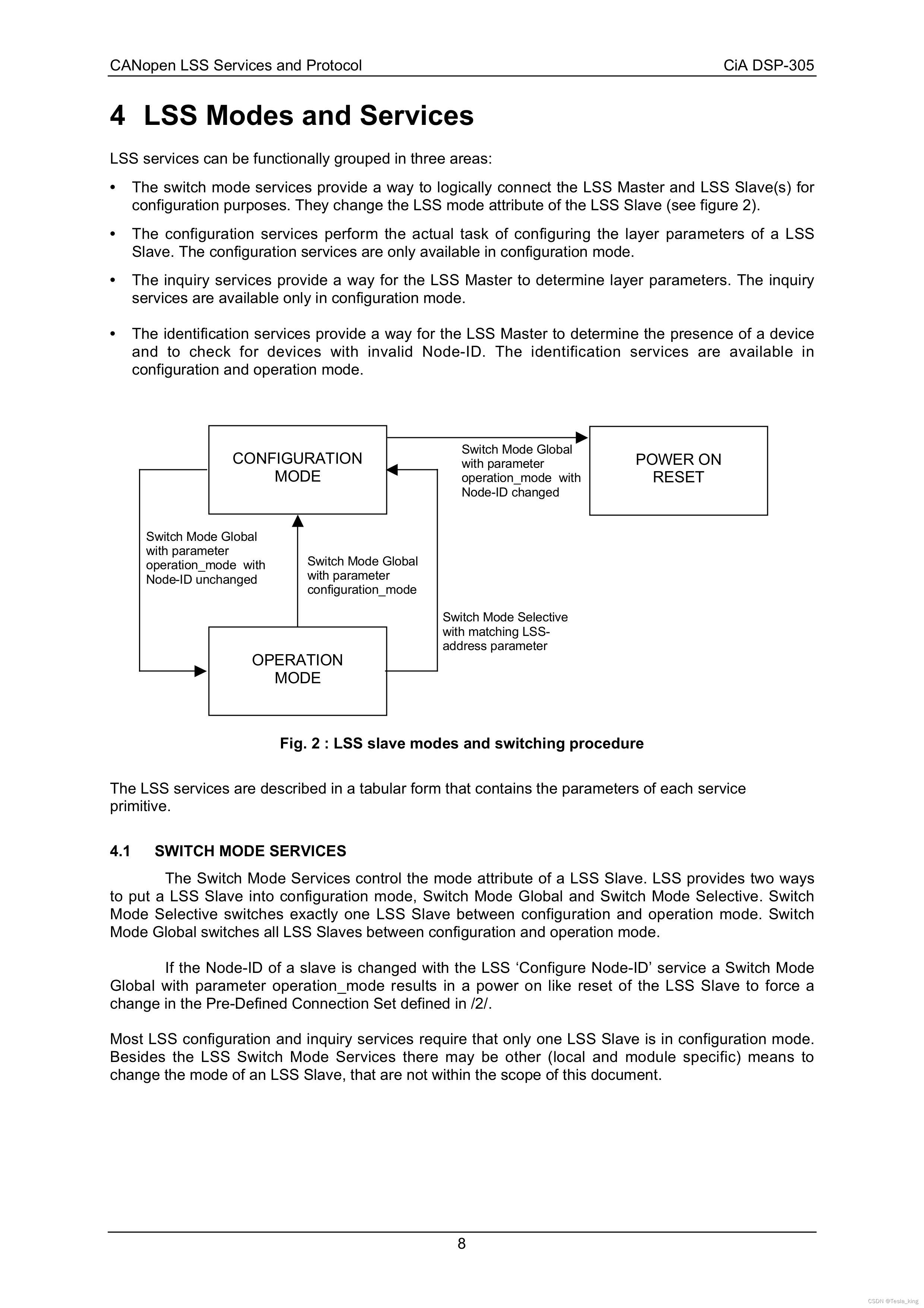
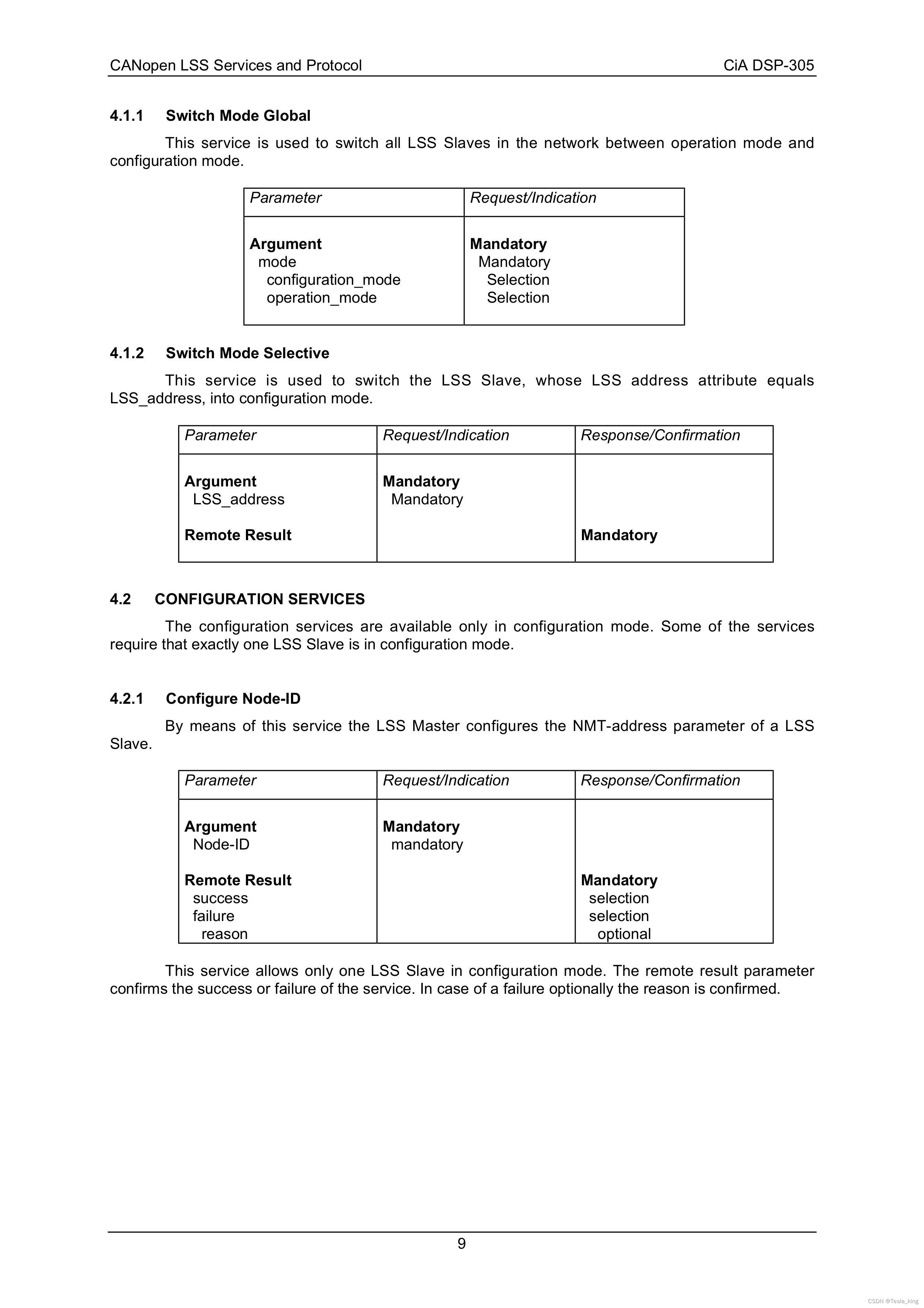

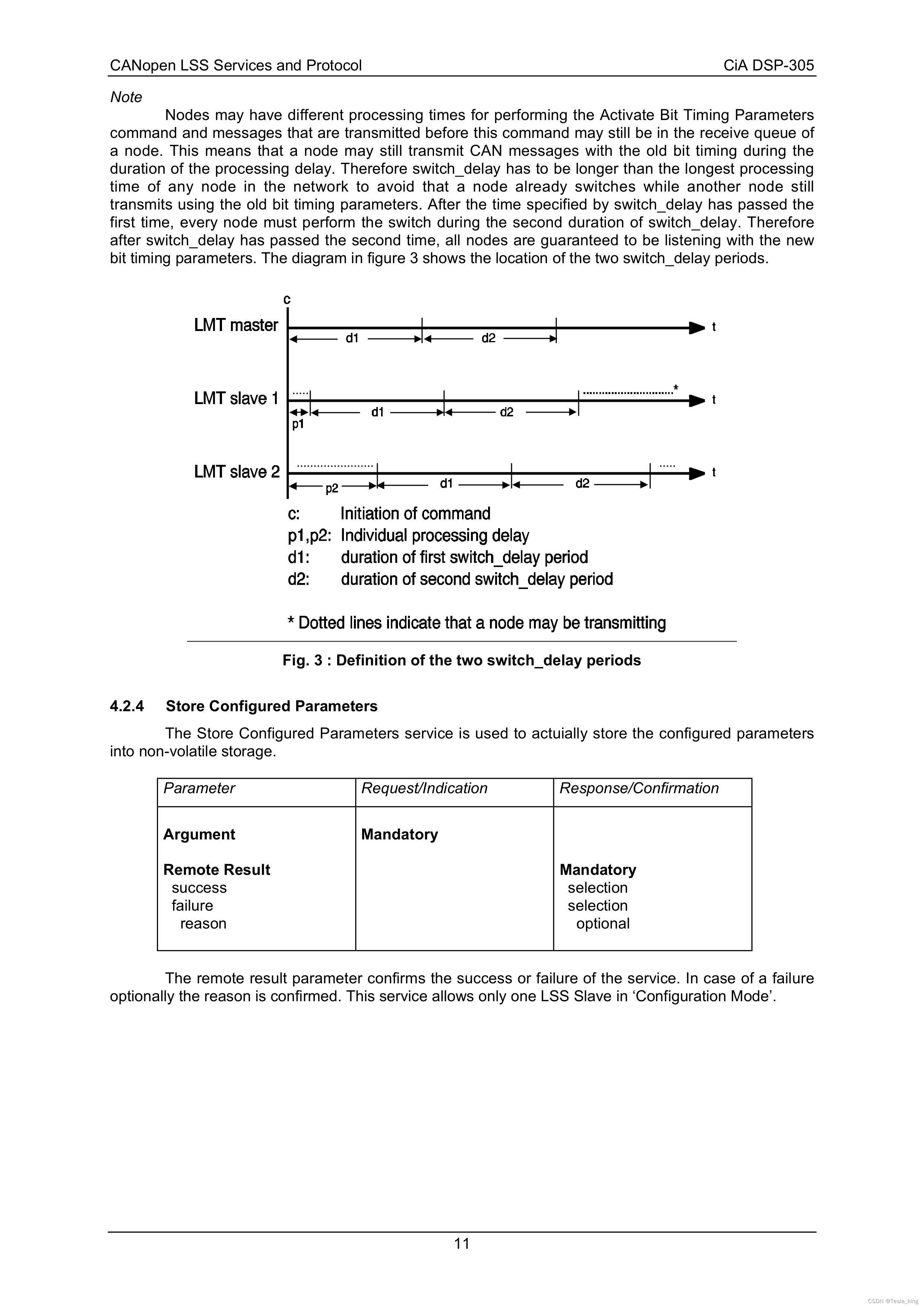
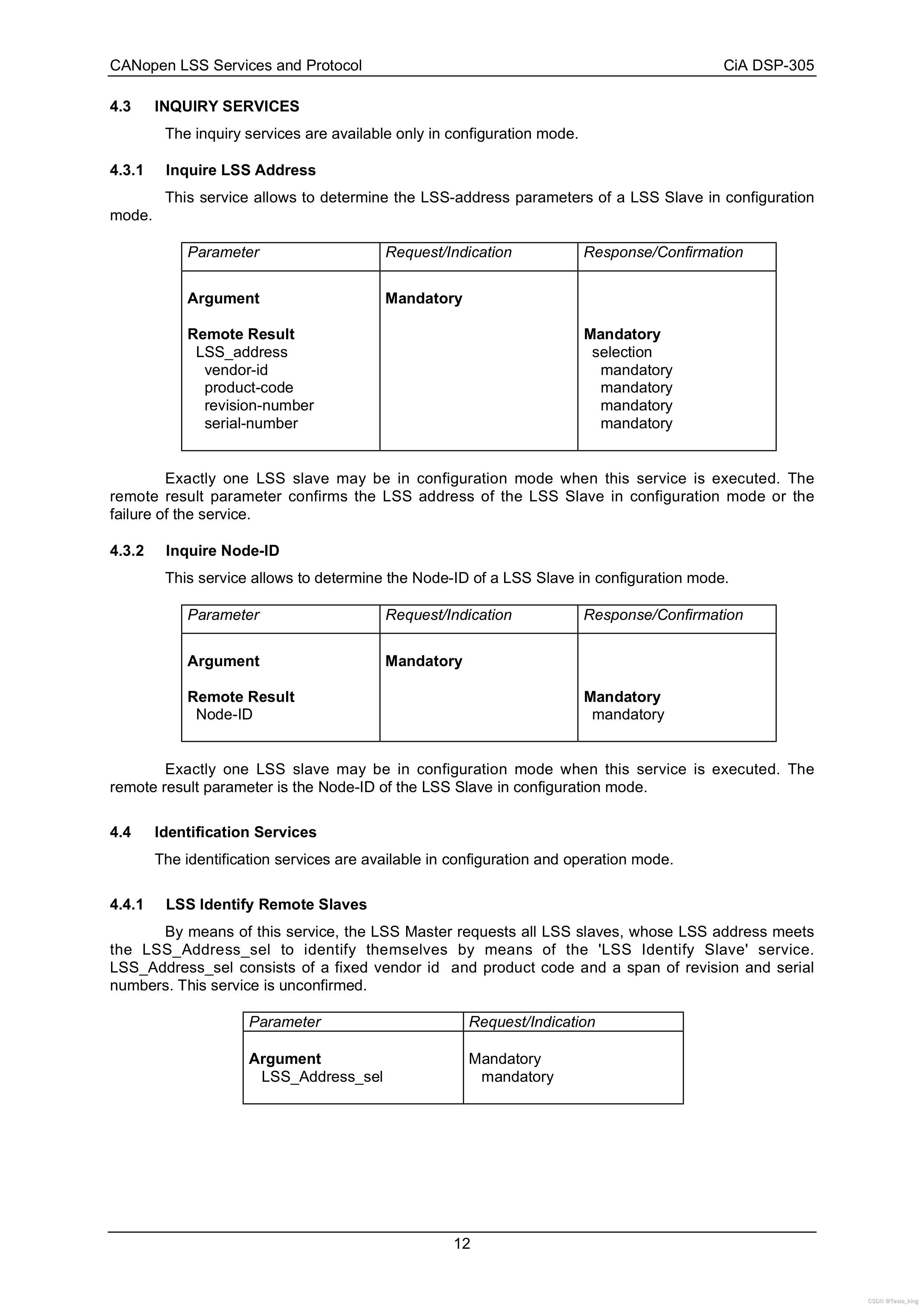


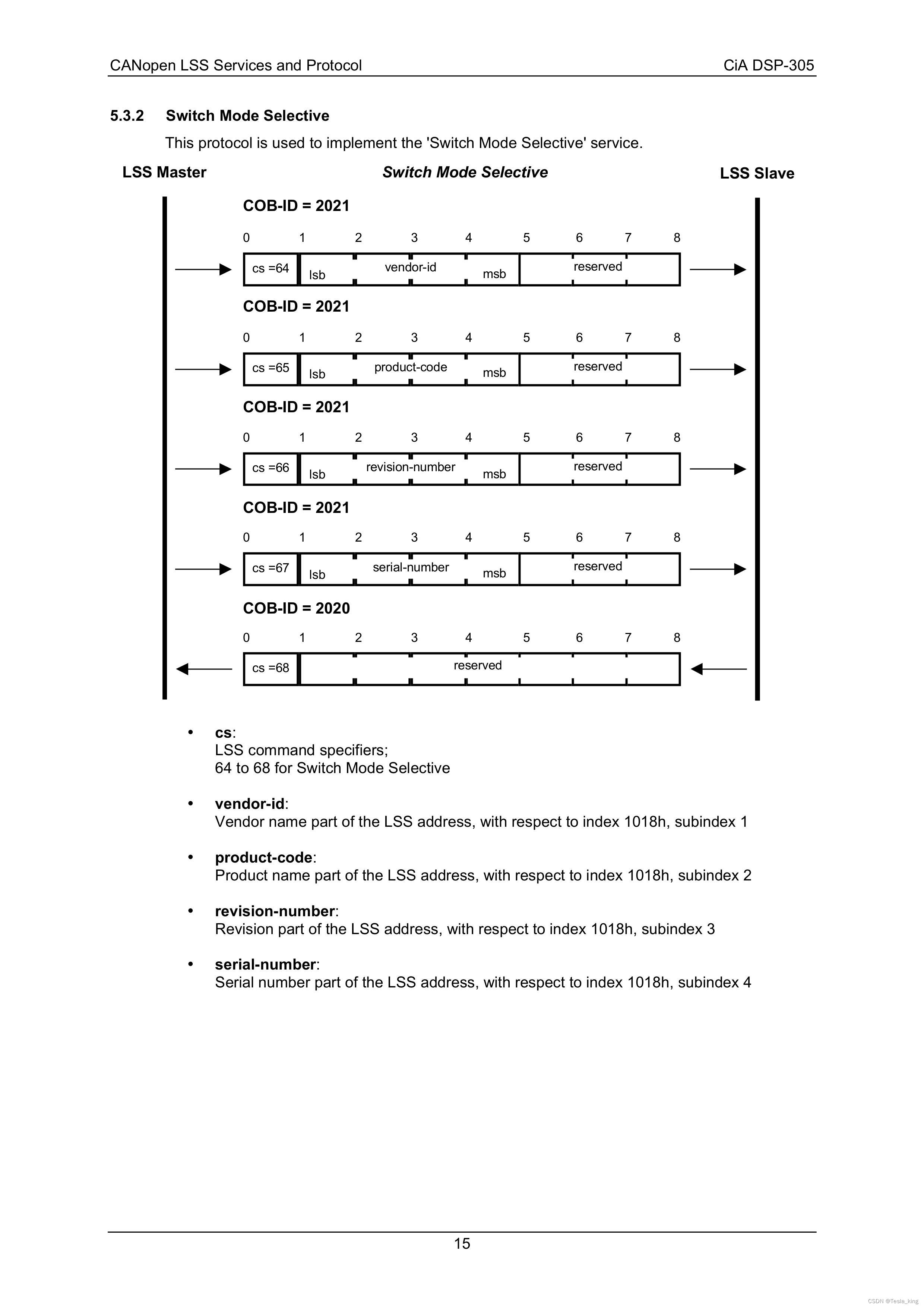


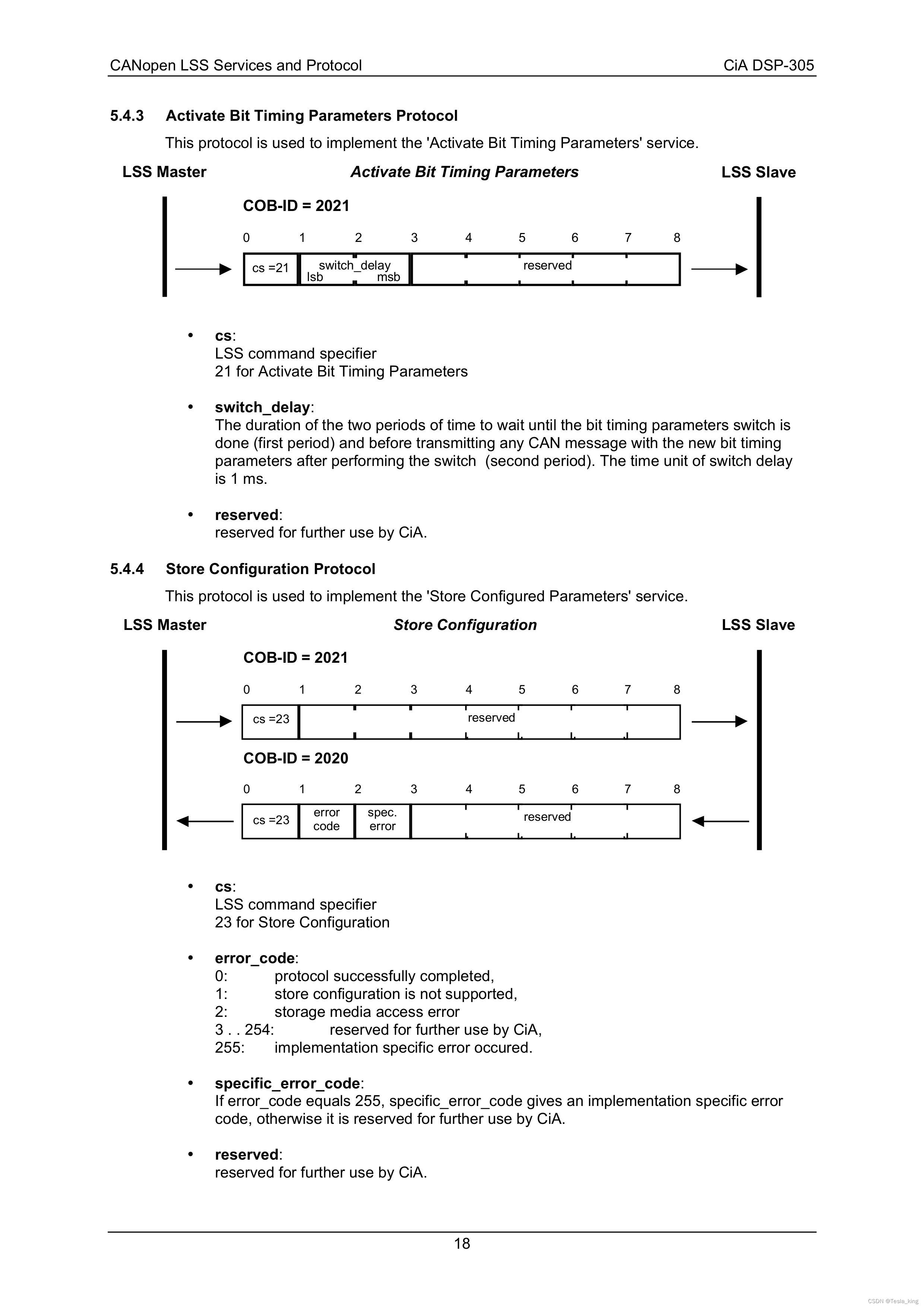
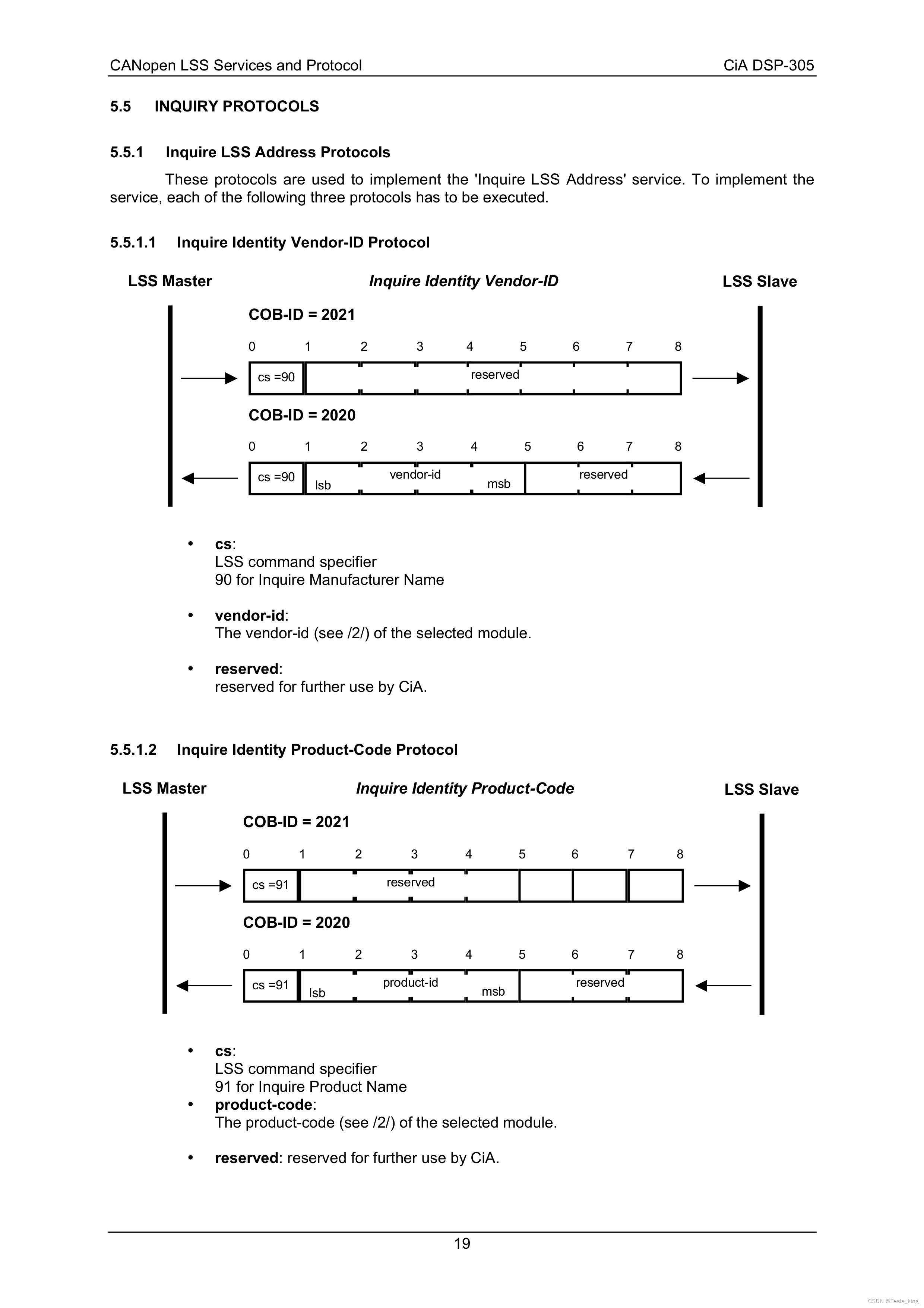
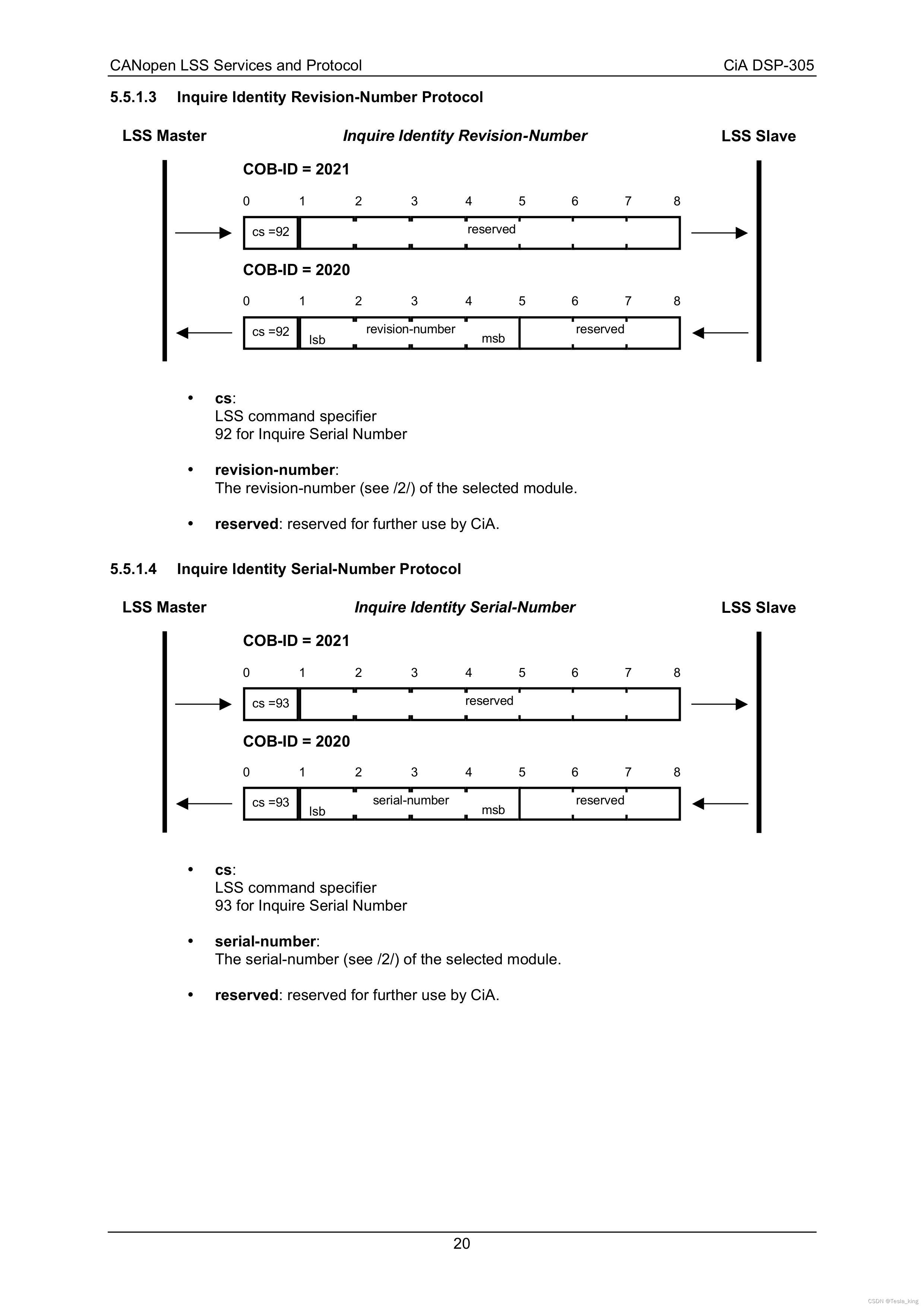
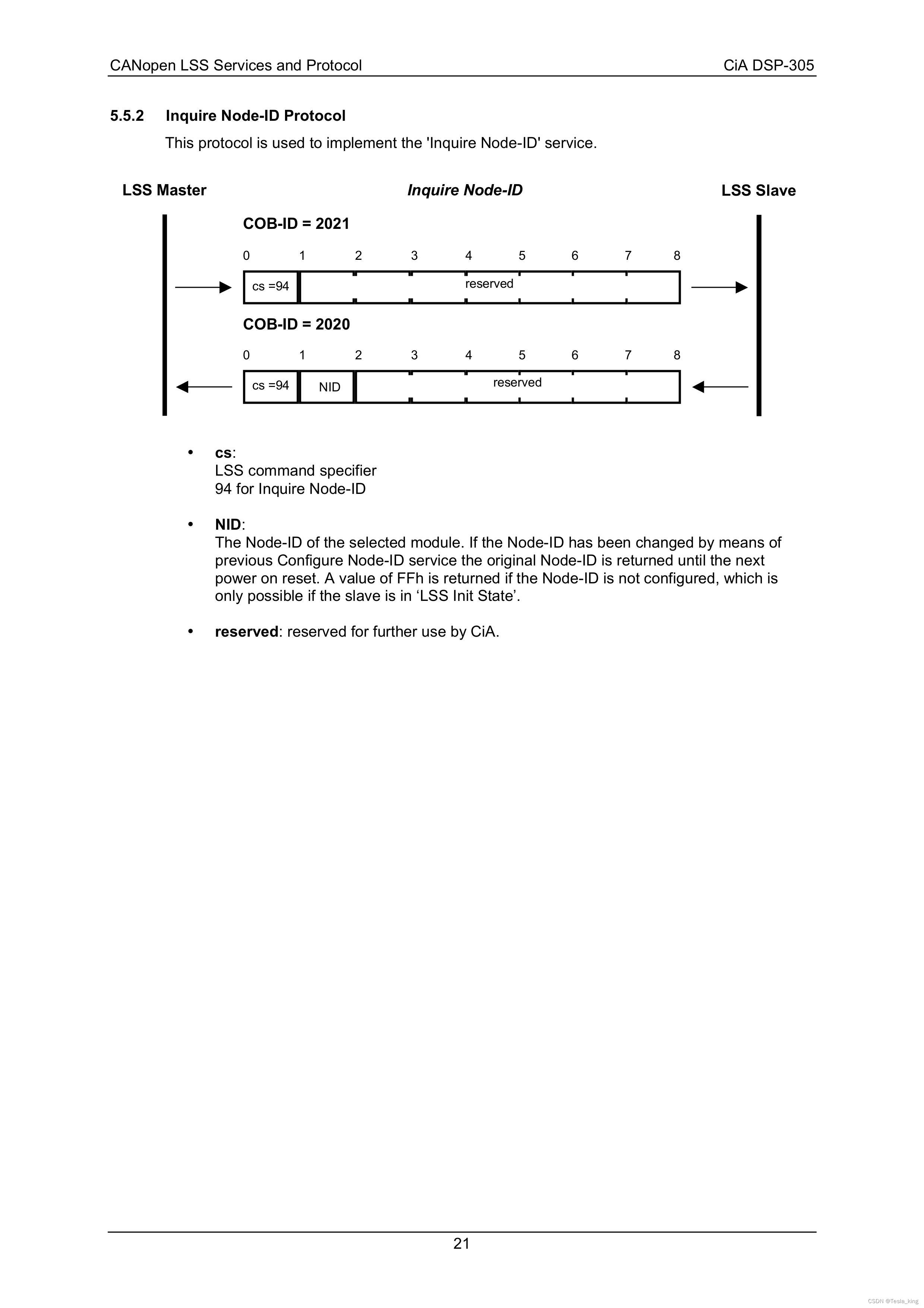

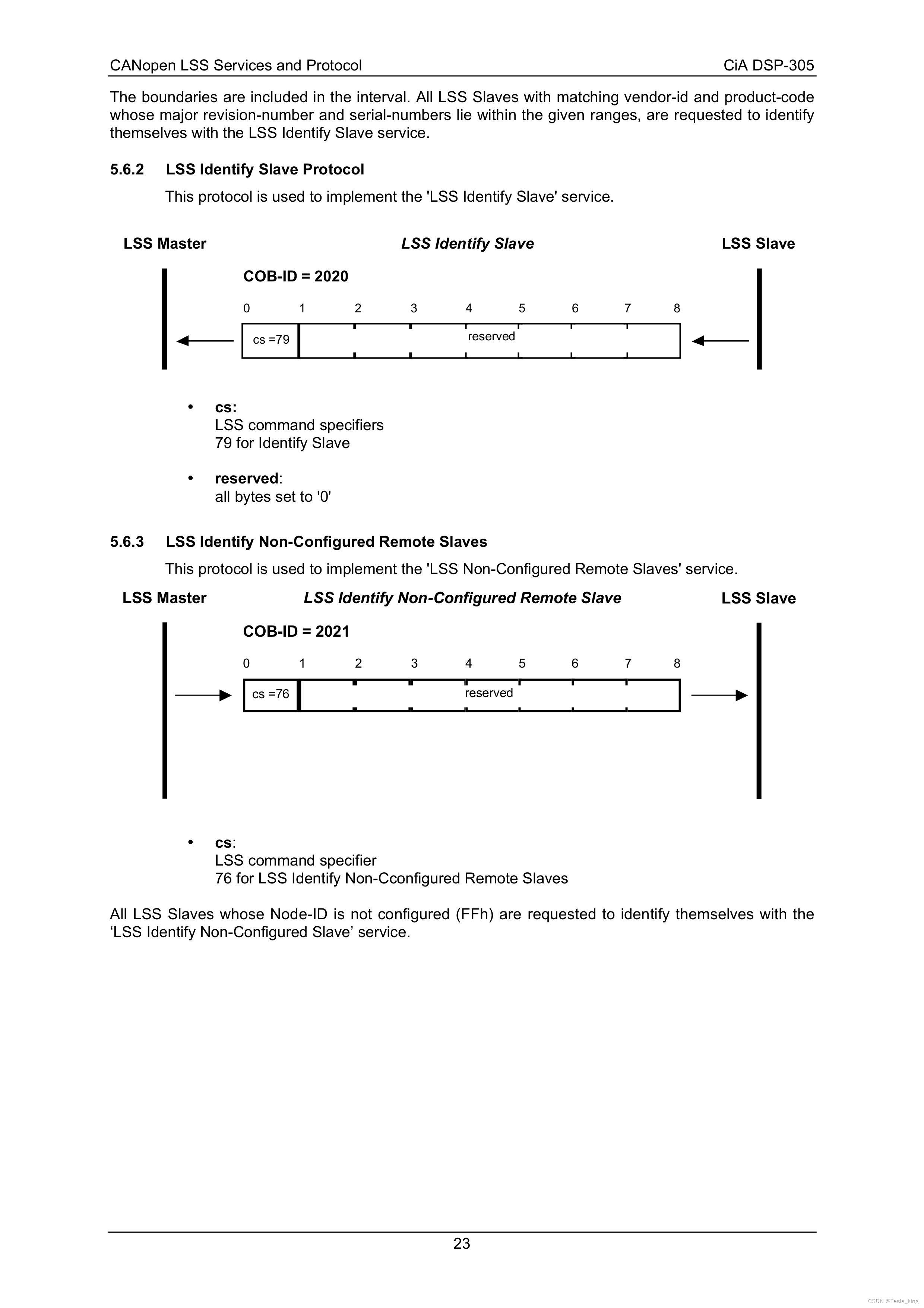
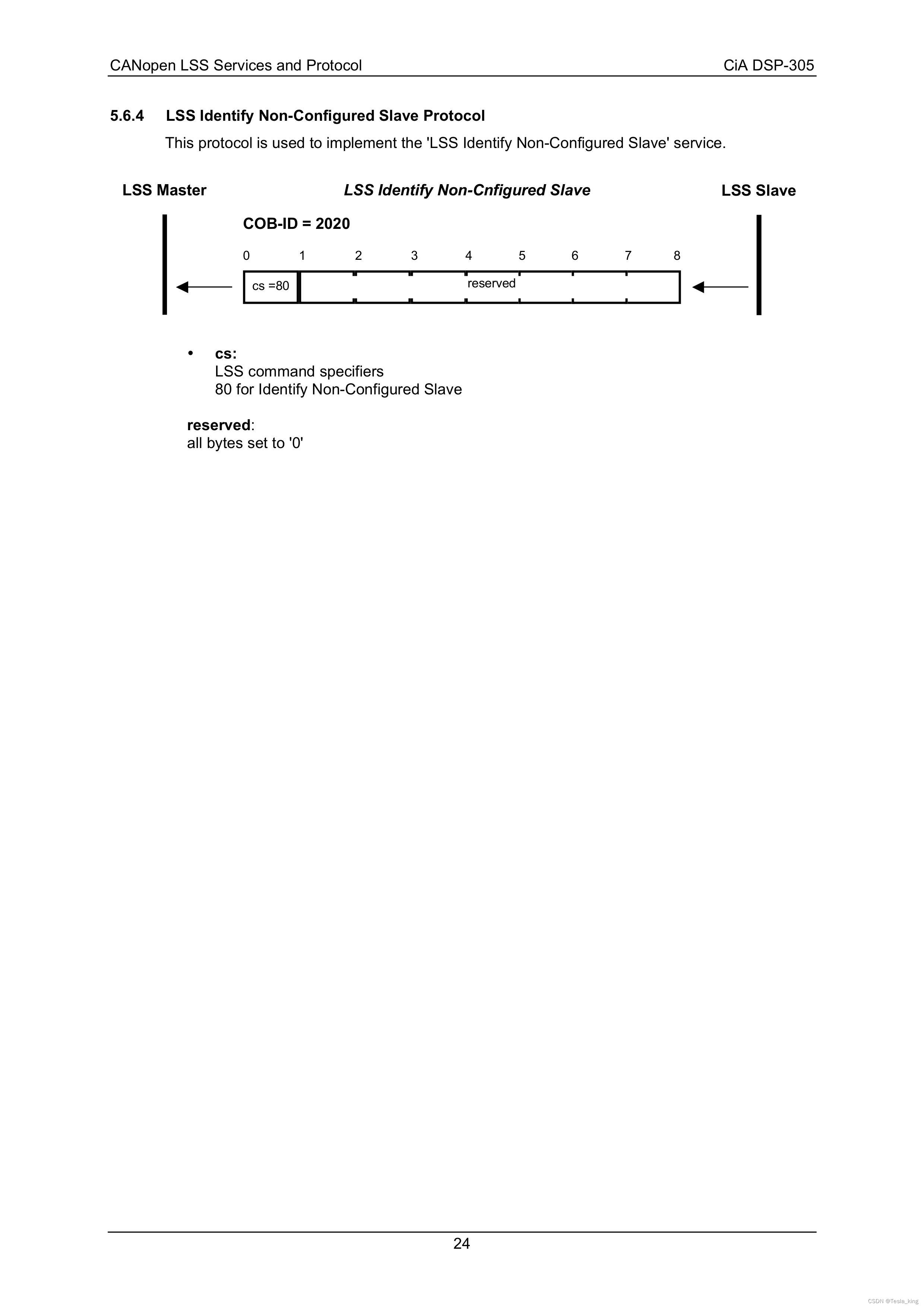
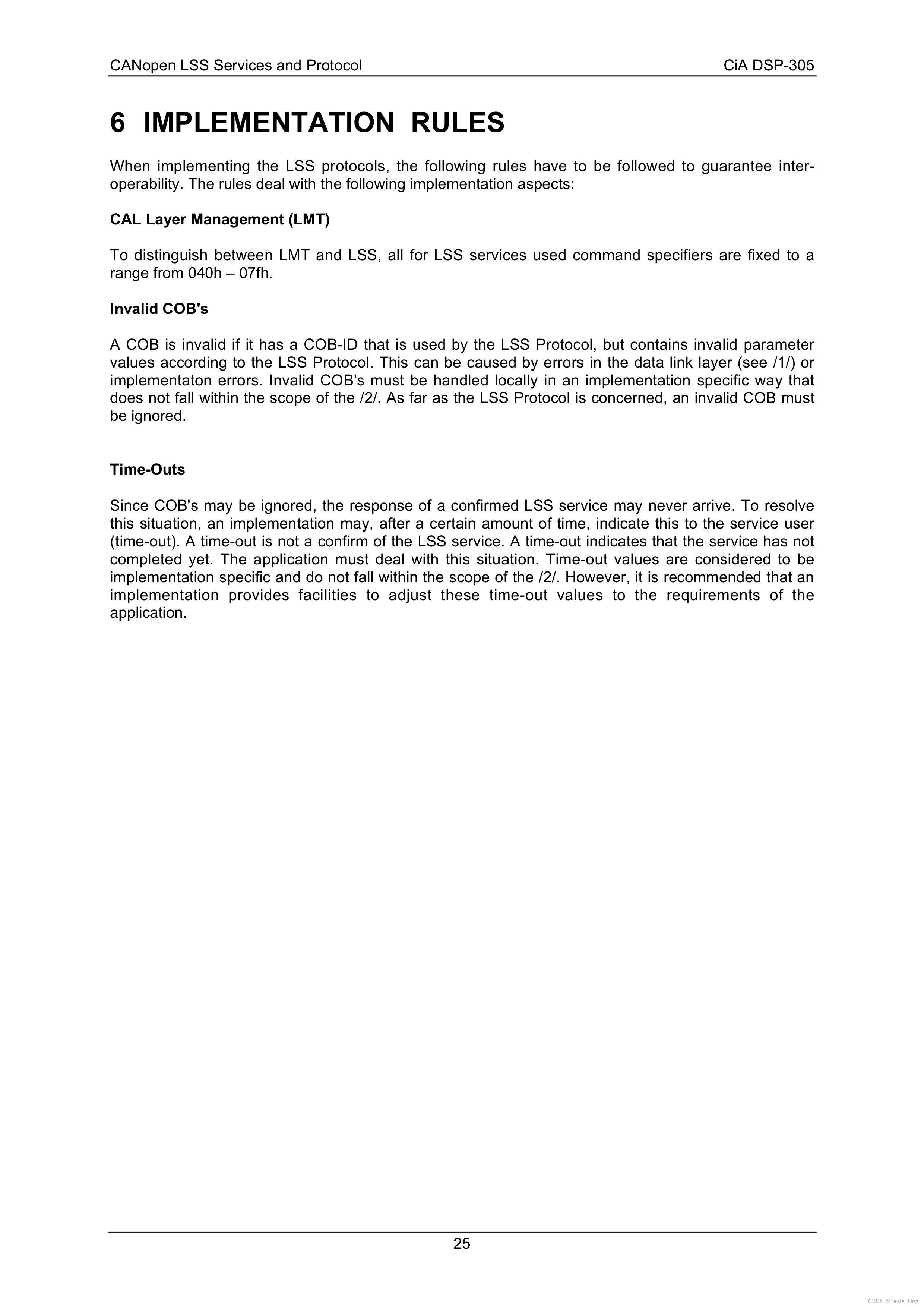
LSS distinguishes between an LSS manager (typically residing in the host controller) and the LSS servers. LSS enables the LSS manager to modify the LSS server’s CANopen node-ID and to switch the entire network from one data rate to another. LSS utilizes exactly two CAN frames. The CAN data frame 7E5h carries the command from the LSS manager to one or several LSS servers. The CAN frame 7E4h is used to provide the response(s) to the LSS manager. LSS is specified in the document CiA 305.
CANopen node-ID assignment via LSS
The entire 128 bit of the Identity object 1018h (vendor-ID, product-code, revision number, serial number) are called the LSS address. The LSS address allows the LSS manager to differentiate between the LSS servers, even if one or several LSS servers do not own a valid CANopen node-ID. Via the LSS switch state selective command, the LSS servers forces exactly one LSS server to enter the LSS configuration state. Only in this state the LSS server accepts a new CANopen node-ID that is proposed by the LSS manager. It is the LSS manager’s task to ensure that during the assignment of the CANopen node-ID, there is only one LSS server in the LSS configuration state.
In case the LSS addresses of the LSS servers are unknown to the LSS manager, the LSS manager may have several means to detect the LSS addresses. In case the LSS servers already own a valid CANopen node-ID, the LSS manager just reads the content of the object 1018h of all LSS servers in the system, via SDO. In case the LSS servers do not own a valid CANopen node-ID the LSS manager has to rely on additional LSS services. The LSS fastscan service enables the LSS manager to scan via bit masks, whether there exists an unconfigured LSS server with an LSS address in a given LSS address range. By executing several scanning cycles, the LSS manager can identify exactly one unconfigured LSS server and can subsequently provide a valid CANopen node-ID.
CANopen bit rate switch via LSS
The LSS enable the LSS manager to switch the entire CANopen system from one to another bit rate. Therefore the LSS manager configures the new intended bit rate individually via LSS in all CANopen devices in the system. After the successful configuration, the LSS manager requests the bit rate switch via a global LSS service at all LSS servers at the very same time. After a switch delay, all devices in the network operate on the new bit rate.
It is recommended to use the LSS bit rate switch very carefully. In case there is at least one device that is not switching correctly to the new bit rate, the CANopen network shows a severe error behavior. A proper control system is not available any longer. Devices operating on the “wrong” bit rate have to be identified, and dismantled from the system. Those devices have to be placed in a separate system for reconfiguration, prior to installing them again in the control system. For initial bit rate adjustment, LSS bit rate switch is not suitable. For such scenarios, the automatic bit rate switch is to be considered.
Typical identification of unconfigured LSS server by means of LSS Fastscan
In case several unconfigured LSS servers exist in a CANopen system, they can be identified by means of the LSS Fastscan service. To be able to distinguish between the different unconfigured LSS servers, the LSS manager achieves the at the beginning unknown LSS addresses of the unconfigured LSS, through a certain number of LSS fastscan scanning cycles. In the first request of a scanning cycle the LSS manager proposes a bit pattern of the size 1 to 31 bit for the IDnumber (either vendor-ID, product code, revision number, serial number of unknown LSS address). All unconfigured LSS servers evaluate, whether their LSS address matches with the proposed bit pattern in the given part. Only if the proposed bit pattern is identical to the given part of the LSS server’s LSS address, the LSS server indicates this to the LSS manager and will continue operating in this scanning cycle. All other unconfigured LSS servers withdraw from the current scanning cycle and will wait for the next scanning cycle. In the next LSS manager’s request the LSS manager again proposes a bit pattern of the size 1 to 31 bit for another part of the LSS address to be identified. Again all unconfigured LSS servers participating in this scanning cycle compare the proposed bit pattern with the relevant part of their LSS address and indicate a 100% match to the LSS manager. Other LSS servers, where the proposed bit mask is not equal to the relevant part of the LSS address, do not take part in this scanning cycle any longer. This way, by repeating this procedure several times, the LSS manager is enabled to identify a single, unconfigured LSS server and automatically gets the entire LSS address. As soon as one unconfigured LSS server is identified, the LSS manager can assign a CANopen node-ID value to this LSS server so that the LSS server is enabled to take part in the CANopen network.
To decrease the boot-up time in CANopen systems that may be modified by the end user, the LSS manager could store LSS addresses that have been identified. On each power-up, the LSS manager could try those addresses first and if then there is still an unconfigured LSS server left in the system, the generic LSS scanning cycle is started.






















 3073
3073

 被折叠的 条评论
为什么被折叠?
被折叠的 条评论
为什么被折叠?








